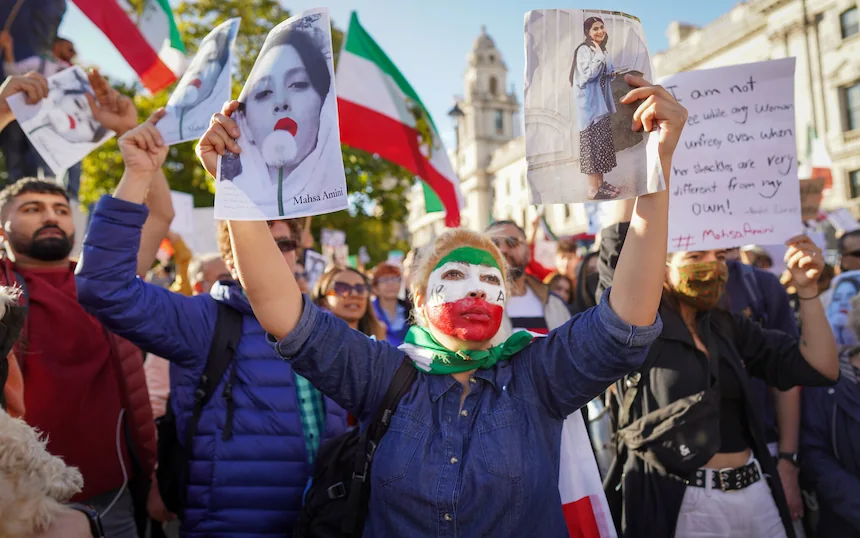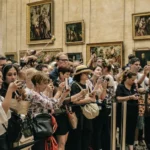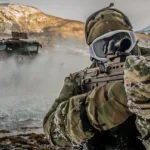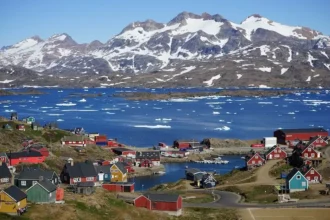A Molotov cocktail arcs through the night in Santiago during the 2019 protests against inequality; a baton slams into a young woman’s eyes in Tehran, October 2022, after she dares to protest Mahsa Amini’s death in police custody. In Gaza, entire apartment blocks are flattened by airstrikes as journalists debate the terminology: conflict, war, or genocide? In Atlanta, police kill a forest defender in 2023 protesting the construction of “Cop City,” sparking outrage in some corners, indifference in others. Meanwhile, in Paris, the same year, protestors set fire to trash piles and clash with police over pension reforms; some call it democratic resistance, others call it chaos.
These images travel fast. They demand reaction. They ask to be named: violence. But are they the same? Who decides? Who narrates? And what role does location, on the map and in the moral imagination, play in shaping our answers?
The question—is violence shaped more by place, or by perception?—lands in the midst of a global crisis of moral interpretation. Our daily lives are flooded with images, filtered through algorithms, and bent by ideological spin. Violence does not reveal itself easily in this constant blur; it must be named, pointed to, made visible—or it disappears into the noise. Violence no longer speaks for itself. Its meaning is made in the moment of witnessing, and in the framing that follows.
To understand violence today, we must not only map where it happens, but we must ask how it is framed, by whom, and to what end.
This matters now more than ever. Political actors use the label of violence to criminalise dissent or legitimise force. Journalists, activists, and academics fight over terminology while people bleed. Injustice is rendered visible or erased, depending on whose suffering counts, whose story circulates, and where the violence occurs.
In this essay, I will respond to this question by showing that while place matters—shaping the possibilities, histories, and stakes of violence—it is perception that gives violence its moral texture. Understanding violence today demands more than mapping its geography. It requires interrogating the lenses through which we see it, and the politics that decide what becomes visible, and what is buried.
Concepts: Violence, Place, and Perception
At its most basic, violence is defined as the intentional use of physical force to harm. But that is only the beginning. Violence is not a neutral fact; it is a judgment. It is a label pinned to actions, intentions, and consequences which is always filtered through interpretation. What gets called violence, and what goes unnoticed, depends entirely on who is asking and where they are standing.
Scholars have long expanded the frame: Johan Galtung distinguishes direct violence from structural violence, which is the slow, invisible grinding down of lives through poverty, racism, and exclusion. Frantz Fanon wrote of colonial violence and interpreted it not only as physical repression but also a psychological warfare. Then there is symbolic violence, as Pierre Bourdieu described it: the soft power of norms, rules, and language that shape what is acceptable, who is credible, and who is disposable.
To ask whether violence is shaped more by place or by perception, we need to clarify what these terms mean. Place indicates a physical location, but it is also related to political context, historical conditions, and institutional arrangements. Violence in a war zone carries different assumptions than violence in a shopping mall. A strike in Kyiv is read differently than a strike in Yemen, even if the weapon is the same.
Perception, on the other hand, is about the framing: who names the violence, how it is narrated, and how it is received. Is it shaped by media, ideology, race, class, and geopolitical alliances? A stone thrown by a Palestinian teenager and a missile fired by the Israeli military may both kill, but they are rarely reported, or remembered, in the same way.
The danger of universal definitions is that they may obscure these important nuances. They flatten meaning and erase politics. To call something “violence” is not simply to describe—it is to take a stance, make a claim, and frequently, to assign blame. The concept is always doing more than it appears.
Place: The Material and Historical Context
Violence does not erupt from nowhere. It takes root in specific terrains that are shaped by colonial legacies, uneven development, state repression, and economic exclusion. Place matters because it sets the conditions of possibility: what violence erupts, what is tolerated, and what is silenced.
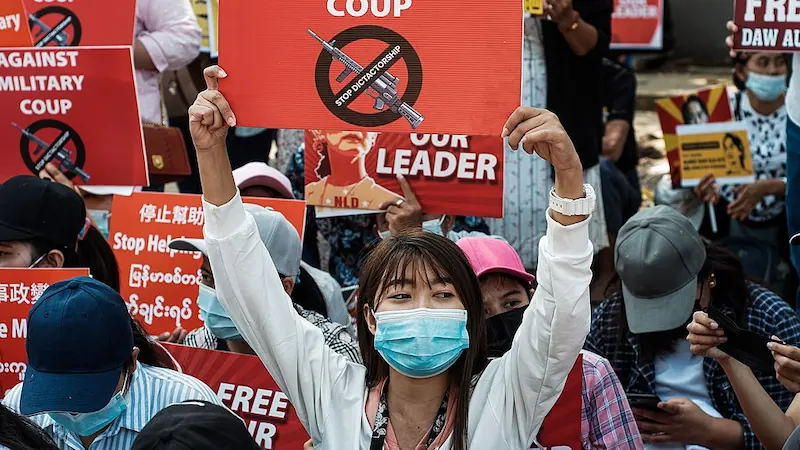
Take cartel violence in Mexico. It is not a chaotic outburst but a product of state complicity, militarised drug policy, and failed economic promises stretching back decades. The location, both geographically and politically, shapes how violence operates: who wields it, who absorbs it, and who profits from it. Consider, for instance, the brutal crackdown on protests in Myanmar after the 2021 military coup, or the ongoing repression of Uyghurs in East Turkistan under Chinese authoritarian rule. In both cases, authoritarianism, regional power dynamics, and international indifference shape not only the forms of violence but also who becomes its target.
Certain places are systematically treated as zones where violence is normalised or invisibilised. Gaza, again, is not just a site of active conflict. It is a cage, locked by decades of blockade, surveillance, and bombardment. The material geography of occupation makes violence both constant and routinised. And yet, that same space is also stripped of its context in international narratives and reduced to isolated actions without histories.
Even within liberal democracies, violence plays out unevenly across space. Policing in American suburbs looks vastly different from policing in Black urban neighbourhoods. The city of Atlanta’s decision to bulldoze part of a forest to build a massive police training centre, “Cop City”, is a spatial decision embedded in racial capitalism, gentrification, and the militarisation of public safety. But while place explains where violence happens and why, it does not fully account for how it is seen or whether it is even recognised. For that, we need to deconstruct perception.
Perception: The Power of Seeing, Naming, and Feeling Violence
A woman is thrown to the ground and beaten by police for the way she wears her hijab. To her, this is not an “enforcement of cultural norms”; it is pain, fear, and humiliation.
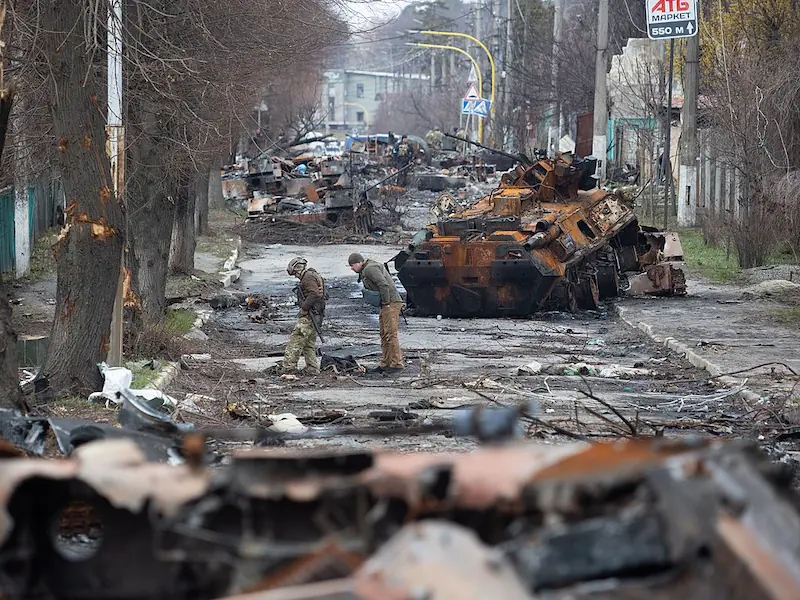
A U.S. drone strike levels a home in Afghanistan, killing an entire innocent family. For those left behind, it is not “collateral damage”; it is a child never coming back and a mother buried in rubble. Whether we call it enforcement, error, or strategy, the names we give these acts shape what the world sees as violence and what it chooses to ignore.
Media plays a central role in shaping what is seen, how it is interpreted and whose suffering counts. Coverage of Russia’s invasion of Ukraine triggered unprecedented global empathy, swift sanctions, and military aid righteously. Meanwhile, ongoing violence in Sudan, Ethiopia, or the West Bank struggles to pierce through the noise. The camera doesn’t just record; it selects, frames, and packages. And with it, certain types of violence either become a moral crisis or background noise.
Naming and Framing: When Violence Hides in Plain Sight
Perception is racialised too. Black victims of police violence in the United States are often portrayed as threats, dangerous, non-compliant, somehow responsible for their own deaths. George Floyd’s murder broke through that narrative, but only because of a cellphone video, nine minutes long, shot by a teenager. Without that footage, the official story would have buried the truth. Visibility changed everything.
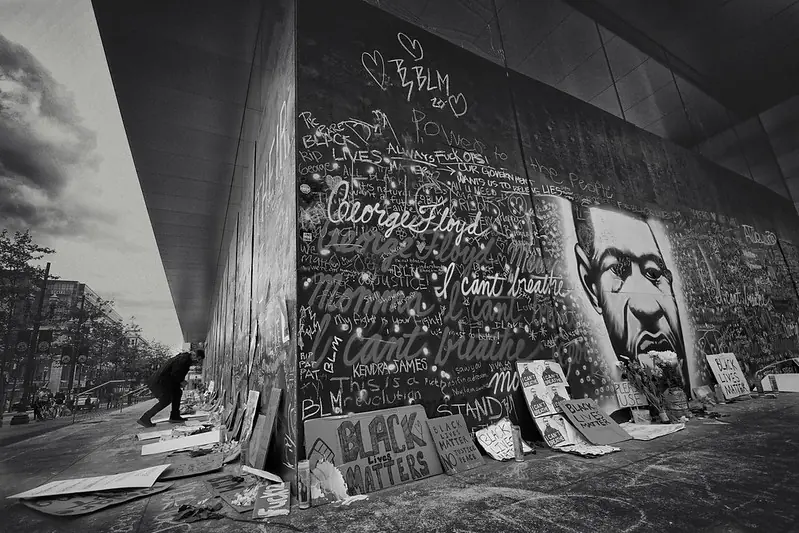
Perception is also gendered. When women in Poland protest draconian abortion laws, or when mothers in Latin America march for their disappeared children, they are dismissed as emotional, irrational, or manipulated. The violence they expose—state neglect, patriarchal control, institutional impunity—is harder to recognise, precisely because it is slow, systemic, and intimate. It doesn’t make for dramatic footage, so it slips past unacknowledged.
The same holds for trans people. When a transgender person is harassed on public transport or denied healthcare, it is brushed off as discomfort or bureaucracy. Their pain is too easily reframed as provocation. The violence they face, such as legal erasure, social exclusion, and physical assault, remains largely invisible unless it erupts into spectacle.
There is also the role of power in narrating violence. States generally monopolise the right to name what counts as legitimate force. A police crackdown becomes “restoring order.” A military occupation becomes “securing peace.” Meanwhile, protestors throwing stones can be easily branded terrorists, looters, or foreign agents. The same act, burning a government building, might be heroic in China, criminal in Hong Kong, and tragic in Minneapolis, depending on who is speaking and who is watching.
Perception is visceral, not just theoretical. And it is shaped by storytelling. It is shaped by whose account gets airtime, whose pain gets believed, and whose rage gets dismissed. In this sense, perception is not just passive seeing. It is active meaning-making.
Intersections and Ambiguities
Place and perception are not separate forces because they tangle. One shapes the other. Sometimes they align: state repression in authoritarian regimes like Iran or Myanmar is easily legible as violence to outside observers. But, many times, they clash. In liberal democracies, where the rule of law is assumed, violence can become harder to name, even when it is happening in plain sight.
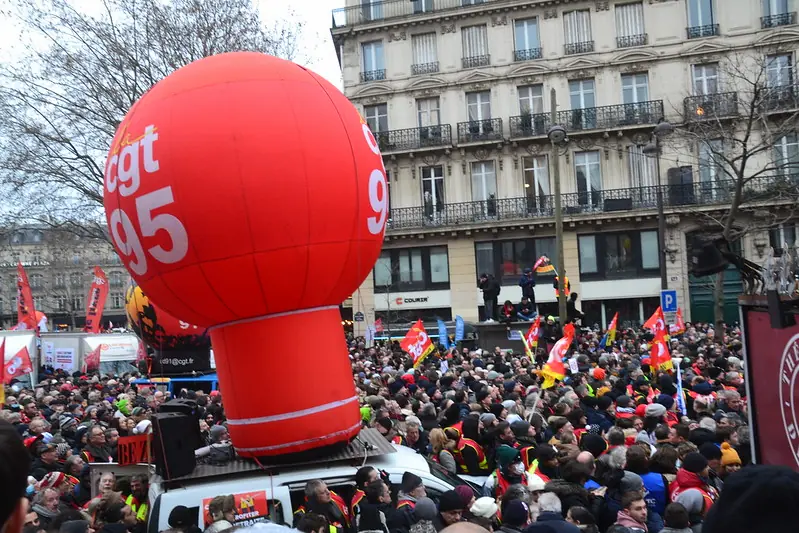
For example, in France, where protests against pension reforms turned violent in 2023. Police used tear gas, truncheons, and mass arrests. In another context, this might be seen as authoritarian overreach. But in Paris, with its reputation for protest culture and democratic vibrancy, the narrative splits: some see justified state control while others see escalating repression.
Some forms of violence hide in plain sight because they do not fit the dominant moral template. Letting migrants drown at sea is violence. Cutting off healthcare for undocumented workers is violence. These acts may not be loud or explosive, but they kill, they wound, they traumatise. The danger is that they do not look like violence to some people. They look like policy outcomes, paperwork, and border control.
Activists and movements work precisely at this intersection, where their efforts are crucial in making invisible violence visible. Feminist collectives counting femicides, environmental activists mapping toxic zones, Black organisers filming traffic stops, —all are resisting violence by naming it, showing it, reframing it. They are fighting for perception to catch up with reality.
Place or Perception? Why Perception Carries More Weight
So, is violence shaped more by place—or by perception? The weight leans toward perception. Place is crucially important because it sets the stage. But perception directs the scene. Violence does not simply erupt from geography; it becomes legible, moral, and political through the lenses applied to it. Perception determines what counts as violence, who is seen as its victim or perpetrator, and whether an act demands justice, punishment, or applause.
Place matters because it builds the structures of power, exclusion, and exposure. But without perception, violence risks remaining invisible or misnamed. A protest crushed in Tehran and one in Atlanta may unfold in vastly different political contexts, but how we interpret them depends on more than geography. It depends on narrative, power, and belief.
To understand violence today, we must not only map where it happens, but we must ask how it is framed, by whom, and to what end. This is the reason that the sociology of violence is never just about the act. It is about the story told afterward.


